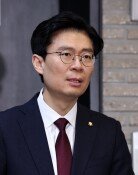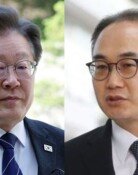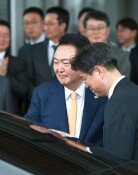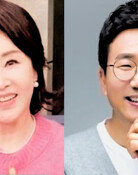Free Trade Talks Focus on Farm Goods
Free Trade Talks Focus on Farm Goods
Posted September. 04, 2006 06:51,
The opening of the agricultural market looks likely to become the biggest issue at the third round of Korea-U.S. FTA negotiations to be held in Seattle, the U.S. for four days starting September 6 (local time).
The U.S. said that it would eliminate all tariffs on its agricultural goods within 10 years, thereby urging Korea to carry out the same level of market opening in a roundabout way.
However, Korea has been making it clear that the opening of its rice market is out of consideration and with regard to other agricultural goods, it will try to postpone the market opening for up to 15 years. Thus, it is expected that negotiators will have hard time narrowing their differences of positions.
Agricultural goods and textiles are the biggest issues
On September 1, trade minister Kim Hyun-jong said at the National Assembly Special Committee on the FTA, Ill strongly request the U.S. that sensitive items in the agricultural sector should be excluded from the market opening or if they are included, we should set a long timeframe for the implementation of tariff elimination.
In initial tariff cut proposals that Seoul and Washington exchanged with each other on August 15, Korea offered a five-tiered lifting of tariffs for agricultural products: immediately; within five years; within 10 years; within 15 years; and exceptions. Among 1,531 agricultural items, 284 (19.6 percent) were reportedly put on the exception list.
Items on the exception list include items that will be excluded from the tariff cuts or items to which Tariff Rate Quota (TRQ) will be applied. Most of items on the list are what the Korea Rural Economic Institute suggested as sensitive items, including rice, bean, beef, pork, chicken, red peppers and onions.
Meanwhile, the U.S. proposal on tariff cuts included five timeframes for the phase-out of tariffs for agricultural products including immediately, within two years, within five years, within seven years, and within 10 years. There is no exception category in the U.S. proposal.
The initial proposals are where both countries clarified their own plans for opening up. However, analysts say that the U.S. planned tariff cuts for all items within 10 years in order to require Korea an expansive opening up of the market.
Another area where both sides show stark differences is the textile sector where Korea is highly competitive. Contrary to agricultural goods, the U.S. presented a conservative proposal while Korea announced a plan for aggressive tariff cuts.
While the U.S. proposed a five-tier lifting of the tariffs for textiles including timeframes of immediately, within three years, within five years, within 10 years and the exception, Korea presented a proposal of three-tier lifting including timeframes of immediately, within three years and within five years.
Auto and pharmaceutical sectors also are main areas of disagreement
When it comes to the auto sector, at issue is the Korean tax system that imposes taxes depending on engine sizes.
The U.S. argues that under the system their cars are at disadvantage because of big engine sizes and Korea should levy taxes depending on the prices of cars. However, Korea intends to stick to the engine-size based system arguing that the same standards are applied to Korean cars.
Problems are also expected in hammering out an agreement in the pharmaceutical sector.
In a meeting on pharmaceuticals and medical equipment that ended on August 23, Washington accepted Seouls new drug policy plan under which only quality drugs with affordable prices will be placed on a list of "positive drugs" that enables people to be reimbursed under related policies of the National Health Insurance.
However, the U.S. is demanding Korea to put in place safeguards to protect the interests of its pharmaceutical companies. In this regard, the U.S. made 16 proposals, including the establishment of an independent agency where multinational pharmaceuticals companies take part in, the readjustment of new drugs prices according to inflation, and the compensation for R&D costs of new drugs.
Issues of services and origin
The two countries exchanged initial offers on services and investment on July 11 and exchanged lists of items for which they want tariff cuts on August 23.
When it comes to services and investment, tariff cuts are carried out in all sectors excluding industries both sides agreed not to open, and it is very important what services are included in items excluded from tariff cuts.
Reports have it that Korea said it will exclude about 100 services, including electricity, postal service, legal service, accounting and medical service from opening up. Earlier, the U.S. said it has no interest in the opening up of the educational market, but U.S. chief negotiator Wendy Cutler said at the second round, We are interested in access to Koreas Internet education service market.
smhong@donga.com







